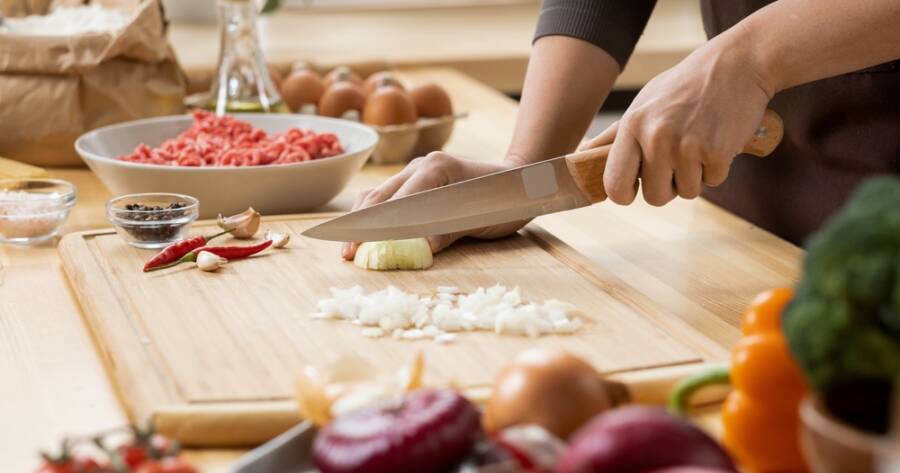Whether you’re a seasoned home cook or just starting your culinary journey, mastering basic knife skills is one of the most valuable things you can do in the kitchen. Not only does it make meal prep faster and more efficient, but it also ensures greater safety and consistency in your cooking. From chopping onions to mincing garlic, understanding the fundamentals can elevate your cooking game and help you feel more confident behind the cutting board.
Get to Know Your Knife
Before you start slicing and dicing, it’s important to get familiar with your tools. A chef’s knife (usually 8 inches long) is the most versatile and widely used in kitchens. It’s designed for a wide range of tasks, from chopping vegetables to breaking down proteins.
Other handy knives include:
- Paring knife: Ideal for smaller, more precise tasks like peeling or coring.
- Serrated knife: Best for slicing bread or soft fruits like tomatoes.
Make sure your knife is sharp, dull blades are actually more dangerous because they require more force and can slip more easily.
The Proper Way to Hold a Knife
Grip your chef’s knife with your dominant hand, pinching the blade (just in front of the handle) between your thumb and index finger. Wrap the rest of your fingers around the handle. This gives you better control and stability.
Use your non-dominant hand to hold the ingredient, curling your fingertips inward like a claw. This “claw grip” protects your fingers and helps guide the blade as you cut.
Chopping vs. Dicing vs. Mincing
Each knife technique has a purpose, and knowing when to use which one can make your recipes more precise and enjoyable.
Chopping
Chopping refers to cutting food into irregular, coarse pieces—think roughly chopped onions or bell peppers for a stew. It’s a quick and informal cut, ideal when appearance isn’t as important.
How to do it: Slice your ingredient into manageable sections, then use a rocking motion with your knife to break it down into chunks.
Dicing
Dicing means cutting food into uniform cubes. There are generally three sizes:
- Large dice: About ¾-inch cubes
- Medium dice: About ½-inch cubes
- Small dice: About ¼-inch cubes
How to do it: Start by slicing the ingredient into even planks, then into strips (julienne), and finally into cubes. This is perfect for salads, stir-fries, and salsas where even cooking and presentation matter.
Mincing
Mincing creates very small, fine pieces—ideal for garlic, herbs, or ginger. Mincing helps distribute flavor evenly and is often used in sauces or dressings.
How to do it: Chop the ingredient finely, then use a rocking motion over the pile, running your knife repeatedly until the pieces are tiny and uniform.
Knife Safety Tips
Always cut on a stable surface. Use a cutting board and place a damp towel underneath it to prevent slipping.
Keep your fingers tucked. The claw grip is your best defense against nicks and cuts.
Clean and dry your knife immediately after use. Don’t leave knives soaking in the sink—this can dull the blade and be dangerous.
Store knives properly. Use a knife block, magnetic strip, or sheath to protect the blade (and your hands).
Practice Makes Perfect
Knife skills take time to develop, but with regular practice, your speed and precision will improve. Start slow, focus on technique, and soon you’ll find yourself chopping like a pro without even thinking about it.
Slice with Confidence
Great meals start with great prep, and solid knife skills are the foundation. By learning to chop, dice, and mince with confidence, you’ll make cooking more enjoyable, efficient, and safe. So sharpen that knife, roll up your sleeves, and get slicing—your next culinary masterpiece starts with the very first cut.

